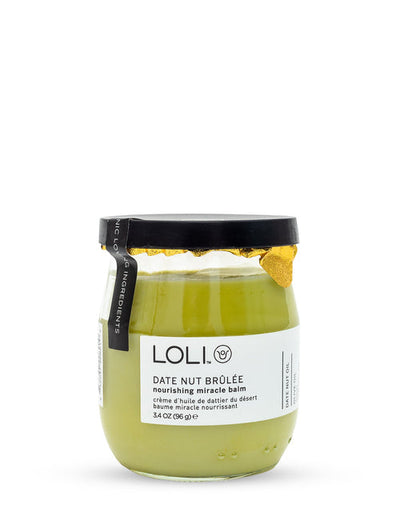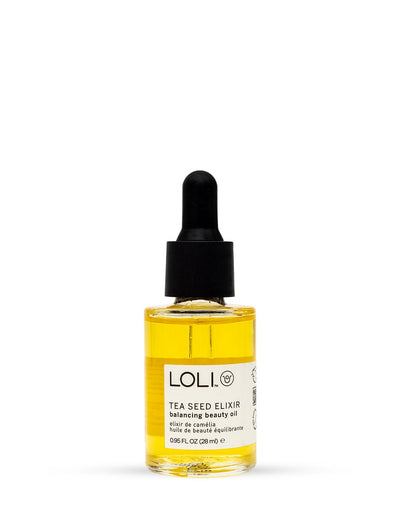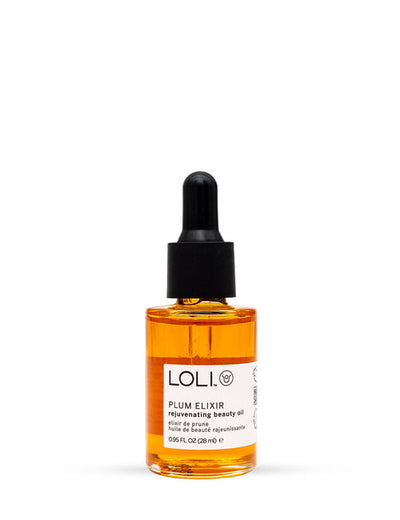Anti-aging and acne skin care: how to find balance for aging skin
Struggling with fine lines and breakouts? You’re not alone. Finding the right anti aging and acne skincare strategy can feel impossible — most products target either aging or acne, but rarely both. Let’s change that.
Anti Aging and Acne Skin Care: Your Ultimate Guide to Clear, Youthful Skin
You can effectively treat both acne and aging signs with a tailored routine that supports your skin barrier, reduces inflammation, and nourishes with non-comedogenic actives. This article breaks it all down step by step.
Why Acne and Aging Happen Together
The Science of Adult Acne and Aging Skin
It's a myth that acne ends with your teens. According to a PubMed study, up to 45% of adults over 25 experience breakouts, often alongside early signs of aging like fine lines and dryness. This dual concern is caused by:
-
Hormonal fluctuations
-
Slower cell turnover
-
Environmental damage
-
Compromised skin barrier
How Traditional Products Can Make It Worse
Many anti-aging skin care products contain heavy oils or strong actives that clog pores, while acne treatments can be overly drying — accelerating visible aging. The key? Balance.
Building an Anti Aging and Acne Skincare Routine That Works
Step-by-Step Morning Routine
-
Gentle Cleanser: Use a sulfate-free, pH-balanced formula to cleanse without stripping.
-
Toner (Optional): Hydrating, alcohol-free toner with niacinamide or green tea.
-
Treatment Serum: Choose serums with retinol alternatives, peptides, or azelaic acid — effective yet non-irritating.
-
Moisturizer: Go for hypoallergenic, oil-free creams enriched with hyaluronic acid or squalane.
-
SPF 30+ Sunscreen: Daily protection is non-negotiable. Pick a non-comedogenic, mineral-based skincare product.
Evening Routine Essentials
-
Double cleanse if wearing makeup or SPF.
-
Incorporate AHA or BHA exfoliants 2–3 times a week.
-
Rotate anti-aging actives (like bakuchiol) with soothing, acne-safe hydrators.
Weekly Add-Ons
-
Clay masks for congestion
-
DIY oat or honey masks to calm inflammation
-
Gua sha massage for improved circulation
Key Ingredients to Look For
For Aging Skin
-
Peptides: Promote firmness and repair
-
Vitamin C: Brightens and protects from oxidative stress
-
Ceramides: Strengthen skin barrier
For Acne-Prone Skin
-
Salicylic Acid (BHA): Unclogs pores and reduces breakouts
-
Niacinamide: Anti-inflammatory, reduces redness and sebum
-
Zinc PCA: Controls oil without overdrying
Dual-Action Ingredients
Some actives work beautifully for both concerns:
-
Retinaldehyde (gentler than retinol)
-
Azelaic Acid (anti-inflammatory and pigment-correcting)
-
Green Tea Extract (antioxidant and antibacterial)
Pro Tip: Look for certified organic labels like ECOCERT to ensure purity and sustainability.
Lifestyle Factors That Influence Skin Health
Nutrition and Supplements
What you eat impacts how your skin behaves. Add more:
-
Omega-3s (flax, walnuts)
-
Vitamin A (carrots, leafy greens)
-
Probiotics (fermented foods)
-
Zinc-rich foods (pumpkin seeds, legumes)
Avoid high glycemic foods, dairy, and inflammatory oils.
Stress, Sleep, and Skin
Chronic stress triggers breakouts and dullness. Poor sleep impairs skin renewal. Incorporate:
-
Breathwork or meditation
-
A consistent sleep schedule
-
Blue-light blocking before bed
Product Safety and Hypoallergenicity

Reading the Label
Always look for:
-
“Non-comedogenic”
-
“Fragrance-free” or natural essential oils only
-
“Clinically tested” or “dermatologist-approved”
Avoid:
-
Harsh alcohols
-
Synthetic dyes
-
Sulfates and parabens
Certified Organic and DIY Options
Prefer a hands-on approach? DIY masks using organic ingredients like:
-
Raw honey (antibacterial, healing)
-
Aloe vera gel (soothing and hydrating)
-
Turmeric (anti-inflammatory)
Common Mistakes to Avoid
Over-Exfoliating
Too much scrubbing weakens the skin barrier. Limit chemical exfoliants to 2–3 times a week and skip physical scrubs.
Layering Incompatible Actives
Avoid combining:
-
Vitamin C + retinol
-
AHA/BHA + retinol
-
Benzoyl peroxide + niacinamide
These combinations can lead to irritation, redness, and breakouts.
Realistic Results and Patience
Timeline to Expect
-
2–4 weeks: Reduced breakouts
-
6–8 weeks: Improved texture and radiance
-
3+ months: Firmer, more even skin tone
Stick with your anti aging and acne skincare routine and adjust seasonally for best results.
Can You Treat Acne and Aging at the Same Time? Yes — Here's How
Dealing with acne and signs of aging simultaneously might feel like a skin care contradiction — one condition is typically treated with drying, exfoliating ingredients, while the other requires hydration and skin barrier support. But with the right anti-aging skincare routine, it's absolutely possible to treat acne without accelerating skin aging.
Modern anti-aging skincare products are no longer just heavy creams. Many now include ingredients that are effective against acne too — like niacinamide, retinoids, and peptides. These multitasking skincare ingredients work to stimulate skin cell turnover, smooth acne scars, and soften the visible signs of aging like fine lines and loss of elasticity.
When you're choosing a product, always look for formulas suitable for all skin types, especially if you have acne prone skin or darker skin tones — both can be more reactive to harsh treatments. Look for labels that say “formulated for your skin type” or “non-comedogenic” to avoid clogging pores while boosting collagen and hydration.
Why You Need to Balance Your Routine
One of the most important things in any skincare routine — especially when tackling both acne and aging — is balance. Overdoing it on anti-acne ingredients like benzoyl peroxide or strong acids can result in a damaged skin barrier, making signs of aging more pronounced and persistent acne worse.
To create the best anti-aging skincare system for your needs, consider these guidelines:
-
Hydrate the skin with lightweight moisturizers containing hyaluronic acid, especially after using any active treatment.
-
Use anti-aging ingredients like retinaldehyde or bakuchiol, which are gentler alternatives to retinol and won’t trigger breakouts.
-
Opt for exfoliation 2–3 times per week to remove dead skin cells, but avoid physical scrubs that can inflame irritated skin or worsen cystic acne.
Remember: Your skin needs time to adapt. Introduce new products you use gradually and monitor how your skin responds.
The Link Between Adult Acne and Premature Aging
Adult women especially face the double challenge of hormonal acne and first signs of aging. As estrogen levels decrease and cortisol increases with stress, acne breakouts become more common — even into your 30s, 40s, and beyond. At the same time, the production of collagen and elastin slows, causing premature aging.
This makes a consistent, customized anti-aging skin care routine essential for maintaining healthy skin and achieving that younger-looking skin glow.
Some of the best anti-aging treatments for those with adult acne focus on restoring balance and resilience. Choose aging skincare products that strengthen your skin from damage, support skin cell renewal, and protect your skin from environmental aggressors like pollution and UV radiation.
How to Build a Free Skin Care Routine at Home
You don’t always need to buy an entire line of anti-aging or acne control products to get results. There are plenty of simple ways to build a free skin care ritual that works — using pantry staples or trial samples, and listening to what your skin needs.
Try this minimalist setup:
-
Cleanse: Lukewarm water and a gentle, pH-balanced cleanser
-
Tone: Green tea or rosewater mist to soothe irritated skin
-
Treat: A DIY mask with honey and turmeric to reduce inflammation
-
Moisturize: Aloe vera gel + a few drops of non-comedogenic facial oil
-
Protect: Zinc oxide-based sunscreen for daily defense
This can help revitalize your skin, especially during flare-ups or transitional seasons. And best of all — it supports your barrier while minimizing your chances of product overload.
Choosing the Best Anti-Aging Acne Products
If you're shopping for targeted solutions, choose anti-aging acne products that multitask. For example, a lightweight gel serum with salicylic acid and peptides can simultaneously combat acne and smooth fine lines. Some dermatologist-loved formulas — like those inspired by CeraVe skin renewing or SLMD skincare concepts — blend active ingredients with soothing agents like ceramides or niacinamide.
What to look for in anti-aging skin care treatment if you’re dealing with acne and wrinkles:
-
Clinically tested for acne and aging skin
-
Supports skin cell turnover
-
Helps improve your skin texture
-
Doesn’t clog pores
-
Boosts hydration and elasticity
Your goal is to keep your skin looking clear, smooth, and vibrant — regardless of skin type.
FAQ
Can I use anti-aging products if I have acne-prone skin?
Yes, but choose lightweight, non-comedogenic formulas with multi-benefit actives like niacinamide or peptides.
Which comes first: acne or aging treatment?
Treat acne first to reduce inflammation, then gradually incorporate anti-aging ingredients.
Is retinol safe for acne-prone, sensitive skin?
Use gentler derivatives like retinaldehyde or bakuchiol, and always follow with hydration.
How often should I exfoliate if I have both acne and aging skin?
2–3 times a week is usually enough. Avoid harsh scrubs.
Are DIY remedies effective for this skin type?
Yes, calming ingredients like honey and aloe vera can support skin healing when used safely.
Sources
-
https://pubmed.ncbi.nlm.nih.gov/30726466/ — "Adult Female Acne: A Guide to Clinical Practice"
-
https://pubmed.ncbi.nlm.nih.gov/18046911/ — "Retinoids in the Treatment of Skin Aging"
-
https://www.ecocert.com/en — ECOCERT Organic Certification





